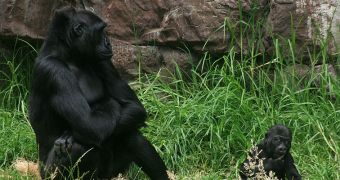In the first multi-species comparison study of aging patterns in primates, researchers discovered that humans, chimpanzees gorillas and a bunch of other primates grow old in pretty much the same, graceful way.
In a research paper describing the findings – published in the March 11 issue of the top journal Science – investigators argue that we are not the only species capable of growing old gracefully, and that the capacity is more widespread among our closest evolutionary relatives than we were led to believe.
For many years, scientists have believed that humans grow older slower than other species. It was also believed that we especially outlive our primate relatives. This belief was demonstrated to be false.
The investigation was made possible by funding provided by the US National Science Foundation's (NSF) Division of Environmental Biology (DEB). A team of 11 biologists and anthropologists was involved in the research effort.
Humans are indeed the longest-lived primates, but we are not the most long-lived species. Clams, seabirds, tortoises and parrots outlive us substantially. But there is a very good reason for that.
“Humans live for many more years past our reproductive prime. If we were like other mammals, we would start dying fairly rapidly after we reach mid-life. But we don't,” says Anne Bronikowski.
The expert, a coauthor of the Science paper and a team member, is based at the Iowa State University.
“There's been this argument in the scientific literature for a long time that human aging was unique, but we didn't have data on aging in wild primates besides chimps until recently,” adds Duke University biologist and study coauthor Susan Alberts.
She explains that the species the researchers compared include capuchin monkeys, muriqui monkeys, baboons and blue monkeys, chimpanzees, gorillas and sifaka lemurs.
For the purpose of the research, aging rates were defined as the rate at which mortality risk increases with age. Some 3,000 primates were studied during the experiments, and their aging rates were found to be surprisingly similar to our own.
“Human patterns are not strikingly different, even though wild primates experience sources of mortality from which humans may be protected,” the 11 authors explain in the new paper.
Despite the study, “we still don't know what governs maximum life span,” says Alberts, also the associate director of the NSF-funded National Evolutionary Synthesis Center (NESC), in Durham.
“Some human studies suggest we might be able to live a lot longer than we do now. Looking to other primates to understand where we are and aren't flexible in our aging will help answer that question,” the expert concludes.

 14 DAY TRIAL //
14 DAY TRIAL //